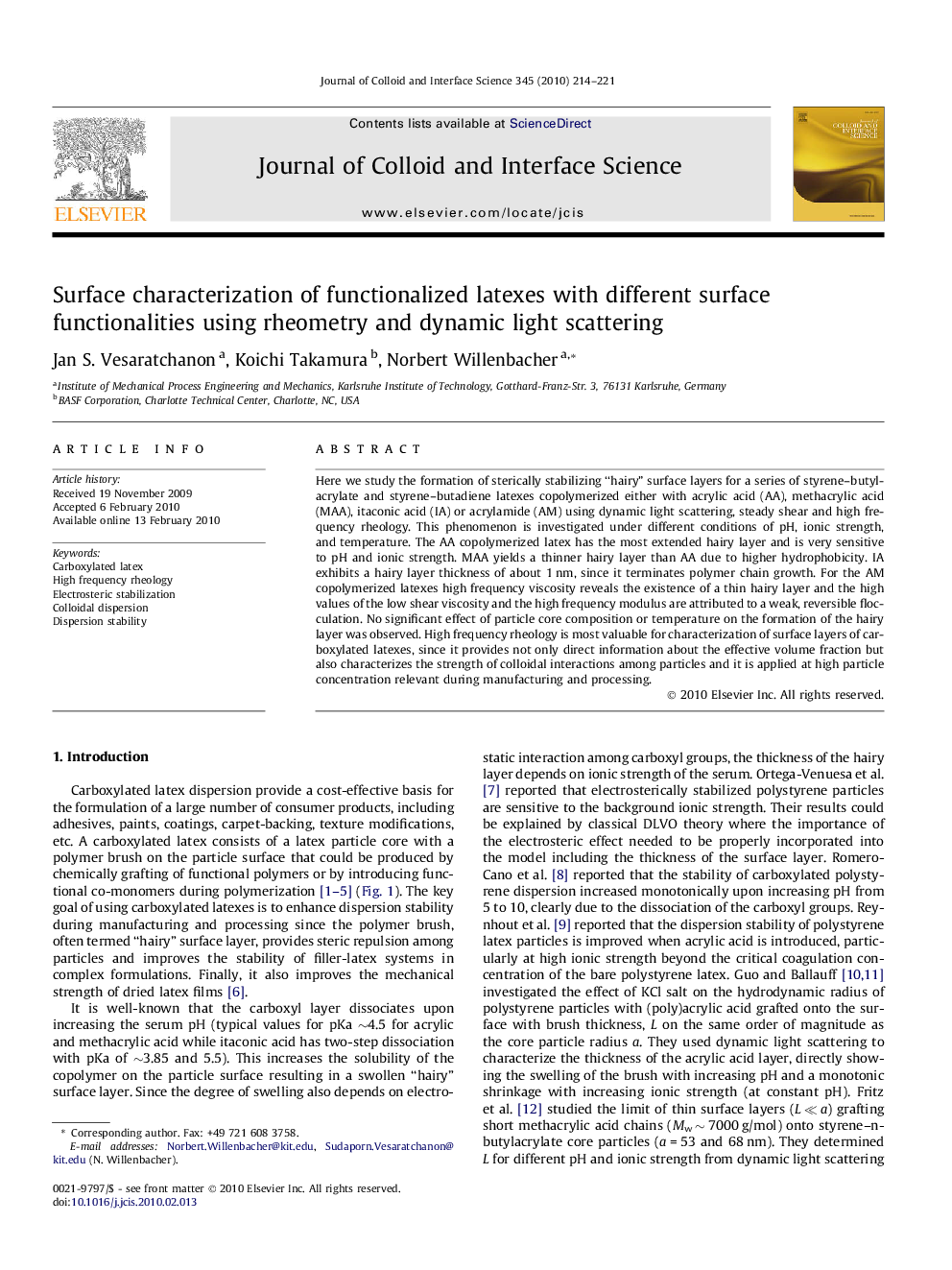| کد مقاله | کد نشریه | سال انتشار | مقاله انگلیسی | نسخه تمام متن |
|---|---|---|---|---|
| 609864 | 880633 | 2010 | 8 صفحه PDF | دانلود رایگان |

Here we study the formation of sterically stabilizing “hairy” surface layers for a series of styrene–butylacrylate and styrene–butadiene latexes copolymerized either with acrylic acid (AA), methacrylic acid (MAA), itaconic acid (IA) or acrylamide (AM) using dynamic light scattering, steady shear and high frequency rheology. This phenomenon is investigated under different conditions of pH, ionic strength, and temperature. The AA copolymerized latex has the most extended hairy layer and is very sensitive to pH and ionic strength. MAA yields a thinner hairy layer than AA due to higher hydrophobicity. IA exhibits a hairy layer thickness of about 1 nm, since it terminates polymer chain growth. For the AM copolymerized latexes high frequency viscosity reveals the existence of a thin hairy layer and the high values of the low shear viscosity and the high frequency modulus are attributed to a weak, reversible flocculation. No significant effect of particle core composition or temperature on the formation of the hairy layer was observed. High frequency rheology is most valuable for characterization of surface layers of carboxylated latexes, since it provides not only direct information about the effective volume fraction but also characterizes the strength of colloidal interactions among particles and it is applied at high particle concentration relevant during manufacturing and processing.
The thickness of the surface layer of styrene–butylacrylate latex functionalized either with acrylic acid (AA), methacrylic acid (MAA), itaconic acid (IA) or acrylamide (AM) is investigated. The extended surface layer of the acrylic acid modified latex is visualized by electron microscopy.Figure optionsDownload high-quality image (81 K)Download as PowerPoint slide
Journal: Journal of Colloid and Interface Science - Volume 345, Issue 2, 15 May 2010, Pages 214–221